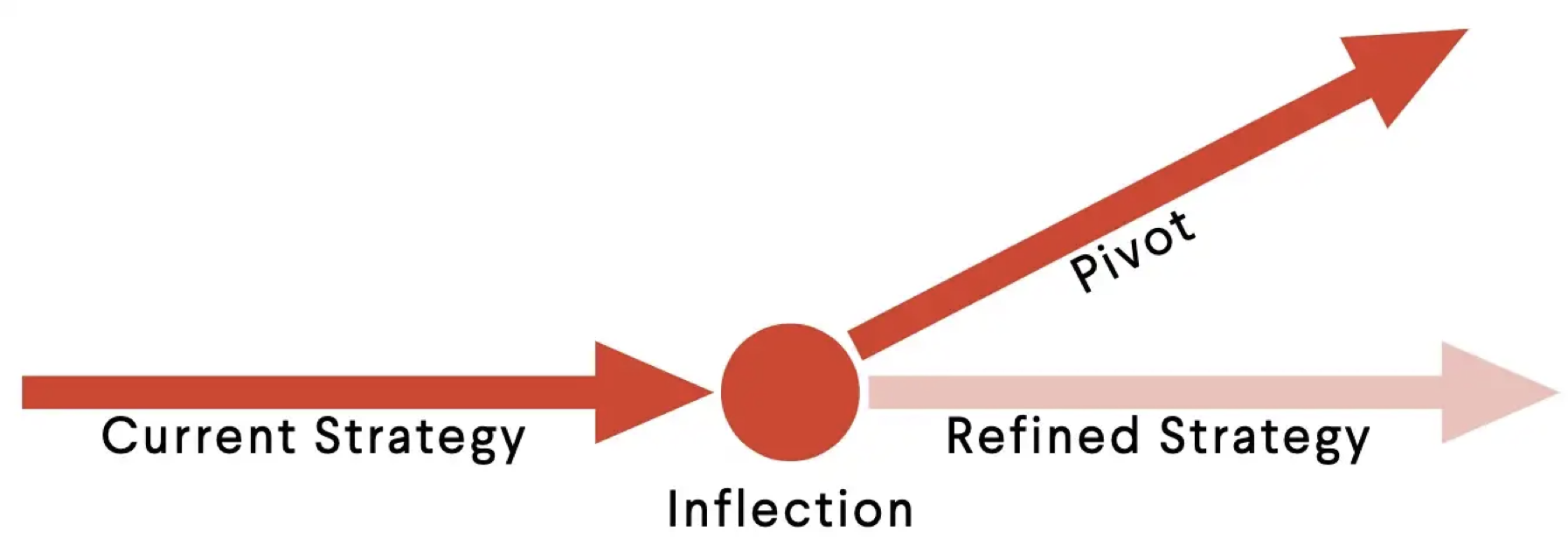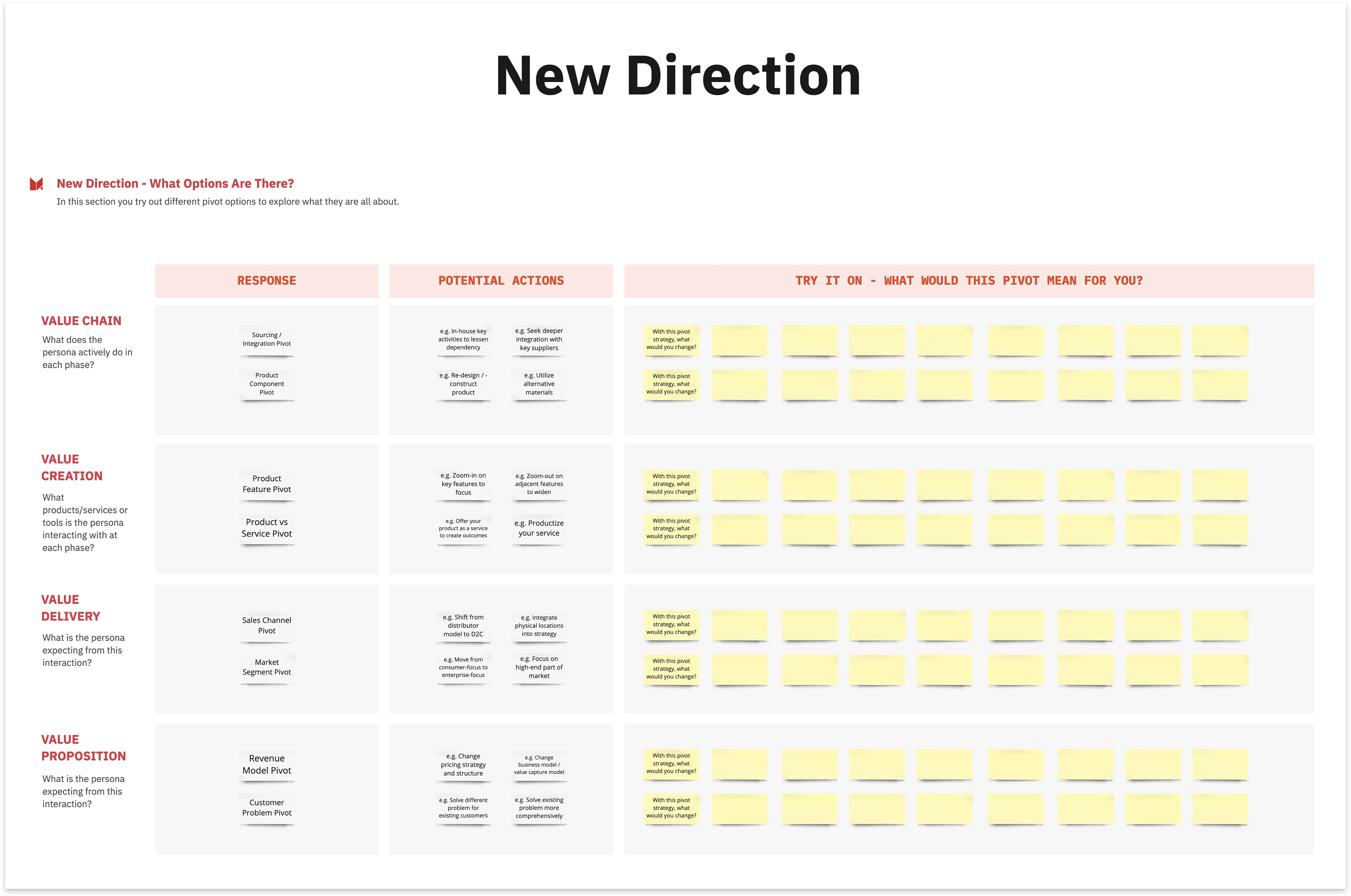¶ Useful Tips
¶ Lean Product Progress
¶ What it is
Only some products we build perform as expected. To share one piece of data, Booking.com (famous for its A/B test methodology) only has a ~30% success rate of the A/B test, which means 70% of the features they build might be abandoned in the end. Thus besides knowing how to scale your product, we also need to be aware of other options if it's not reasonable to scale. And other options include:
1) Iterate: Overall market fit is found; however, the product needs to improve its experience to fit a greater audience before scaling up. Hence we need to iterate on it to increase success first.
2) Pivot: The product is not performing well, yet we still see new opportunities to take it in a different strategic direction. Core parts will need to change to move forward.
3) Abandon: The product could perform better, and we do not see any more opportunities for pivots. In that case, we need to sunset the product.
¶ Why it is useful
We all know it's essential to cut losses in time and stop throwing good money (still available) after bad (already unsuccessfully invested). Facing unsatisfying results and making timely decisions will show bold and resolute leadership and benefit the company in the long run.
¶ When to use it
After the success criteria review and business goals performance review
¶ Iterate
¶ What it is
When we iterate a product or specific aspects, we change them based on available data from customer usage and customer feedback. We find what does not work/does not work optimally, use the data to determine why and how, and find ways to change it. Iterations are tactical changes, meaning the larger vision and strategy for the product or aspects of the product remain intact, and we change how we execute against them.
¶ Why it is useful
Iterations are a critical way to work learnings into a product to strengthen it. It helps improve the overall system of value.
¶ When to use it
Whenever we learn from a customer that an aspect of the product or service is not working, we need to iterate on it.

¶ How is it done
- When customer data conclusively tell you that an existing tactic or feature is incorrect or that a current strategy needs to be changed, review the aspects of the product this relates to (features, marketing, business model, etc.) and the particular operational area of impact.
- Consider the impact of that new knowledge on the area it applies to and discuss as a team how you can adjust your product to make it work for the reality that you have uncovered.
- Make the necessary change in the product and review what impact this has on other parts of the product. Modify the product until it is fully coherent with the newly iterated aspect.
¶ Do's & Don't
Do's
- Take the time to discuss the implications of your learning on all levels before making changes.
- After you conclude what needs to change, do a little brainstorming on ways to change it to ensure you have explored possibilities comprehensively.
- Leverage creative and selection exercises from Concepting to develop ideas and directions for Iterations.
Don't
- Don’t jump the gun on changing things quickly without deep reflection or impact analysis.
¶ Tools needed
- Whiteboard (physical or virtual)
- Post-it notes (physical or virtual)
- Customer data
¶ Pivot
¶ What it is
When we Pivot a product or aspect of a product, we change core strategic choices around the value chain, value creation, value delivery, or value proposition. Those are significant changes that require a re-validation of the pivoted product, yet will be needed when major strategic decisions (such as target audience or value proposition) are wrong.
¶ Why it is useful
Pivoting is a core change in strategy, which is valuable and necessary when we learn that the old set of strategic choices will not work for reality as we know it.
¶ When to use it
Whenever we learn from customers that a strategy is wrong, then a Pivot of the aspects of these concerns is also in order.

¶ How is it done
- When customer data conclusively tell you that an existing strategy needs to be changed, review the aspects of the product this relates to (value creation, value capture, etc. and the particular operational area of impact.
- Consider the impact of that new knowledge on the area it applies to and discuss as a team how you change your product’s strategic set of choices to make it work for the reality you have uncovered.
- You might run a Pivot workshop, which helps explore how pivots can be done and which ones apply to your situation.
- Make the necessary change in the product and review what impact this has on other parts of the product. Modify the product until it is fully coherent with the newly pivoted version.
¶ Do's & Don't
Do's
- Take the time to discuss the implications of your learning on all levels before making changes.
- After you conclude what needs to change, run a comprehensive pivot workshop that explores your options and choices.
- Leverage creative and selection exercises from Concepting to develop ideas and directions for larger concept Pivots.
Don't
- Don’t jump the gun on changing things quickly without deep reflection or impact analysis.
- Don’t forget to question whether you might have to run another round of Experimentation to get data on new choices based on assumptions you don’t yet comprehensively know to be true.
¶ Tools needed
- Whiteboard (physical or virtual)
- Post-it notes (physical or virtual)
- Art of the Pivot workshop template (optional)
¶ Example

¶ Abandon
¶ What it is
When no good/consistent pivot can be found, or too many aspects, in general, have been invalidated to Iterate or Pivot the product towards a place where it makes sense and is comprehensive, the team will need to decide to abandon that product altogether and stop executing against it.
¶ Why it is useful
As the saying goes, it is not useful riding a dead horse. Once we learn conclusively that the horse is dead, it is the most efficient use of resources to stop riding it.
¶ When to use it
Whenever critical strategic choices have been invalidated, and the team does not find a way to Iterate or Pivot the product to a space in which it is consistent and valuable for the uncovered reality, the Abandon choice is the last option.

¶ How is it done
- If you cannot Iterate or Pivot your way forward, consider abandoning the product.
- Hold a meeting to discuss with the team what has been learned, what has been explored and why you believe Abandon is the only reasonable choice.
- If all agree and no suitable alternative is found, conclude to stop working with this product.
- Properly plan the sunset of the product by working with all departments to make the product shutdown and transition easy on users and ensure an archive of all relevant work for future reference.
¶ Do's & Don't
Do's
- Explore all Iterate and Pivot options before choosing Abandon.
- Properly document and archive all your work.
- Ensure your learnings are structured so that other people in the future can leverage the insights generated.
- Ensure customers who use the product are informed and transitioned well, so they don’t harbour resentment.
Don't
- Please don’t jump the gun on choosing to Abandon a product, but don’t drag it out too much, either. Knowing when to move on is an art.